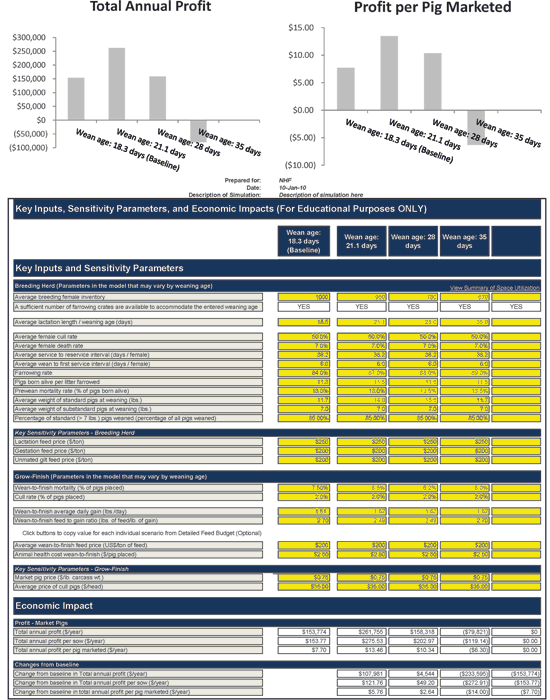Many producers in the U.S. increased weaning ages by adding farrowing crates to accommodate an older weaning age without reducing breeding herd inventories. Frequently, however, economic conditions preclude adding more farrowing space to accommodate older weaning averages. Without adding more space, the only way to accommodate an increase in weaning age is to decrease the breeding herd inventory.
Globally, the pork industry has been transitioning from outdoor production with relatively low fixed costs to total confinement and relatively high fixed costs. To make money in a high fixed cost industry throughput is the key. For pork producers, that means spreading costs over more pigs and kilograms of pork.
Maximizing throughput of the breeding herd is accomplished by:
1. Maintaining breeding herd inventories to fully utilize the space available in breeding/gestation, nursery and finishing facilities;Farrowing typically is the most expensive space to build. Consequently, it is also the bottleneck that limits the number of pigs produced in most production systems.
2. Decreasing weaning age to increase turnover of farrowing space; and
3. Increasing the productivity of breeding females by increasing the number of pigs weaned/breeding female/year.
Weaning age works like a flow regulator on the farrowing crates by increasing or decreasing the number of litters that can be farrowed and weaned from each crate. Increasing the weaning age slows the flow, decreasing the weaning age increases the flow. Increasing the flow requires more females in the breeding herd and means more growing pigs.
But is weaning at a younger age to produce more pigs always better? Younger pigs are harder to manage in the nursery, require more of the most expensive starter diets and the pigs may not perform as well from wean-to-finish. Furthermore, younger weaning ages mean shorter lactation lengths for breeding females, which give them less time to recover and may decrease reproductive performance in subsequent litters.
The advantages of weaning older pigs may include:
- Less of the expensive starter diets are required;
- Decreased wean-to-finish mortality;
- Increased wean-to-finish average daily gain;
- Improved wean-to-finish feed conversion ratio;
- Decreased percentage of culls and increased percentage of full value pigs marketed;
- Lower animal health costs; and
- Increased farrowing rate and born alive in subsequent parity;
Production, Budgeting Spreadsheet
A breed-to-finish production and budgeting spreadsheet designed specifically to evaluate whether it pays to reduce breeding herd inventory to increase weaning age is available from the Iowa Pork Industry Center (IPIC) at Iowa State University.
The spreadsheet is free, but requires completion of an online registration form. Go to the IPIC free software page (http://www.ipic.iastate.edu/software.html), choose Spreadsheets and then “Economics of Weaning Age Calculator.” The spreadsheet works with Microsoft Excel 2003 and newer versions. The spreadsheet is currently only available in English.
Alternative breeding herd inventories and weaning ages may be evaluated for a baseline and up to four scenarios. Operation-specific production and financial information can be entered. The spreadsheet also helps determine how much the breeding herd inventory must change for alternative weaning ages to ensure the farrowing capacity of a farm is not exceeded. Total annual profit for the operation is the preferred economic outcome to evaluate the scenarios relative to the baseline.





